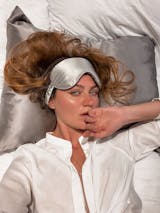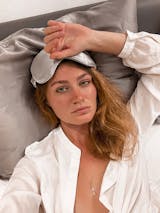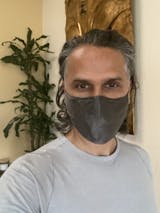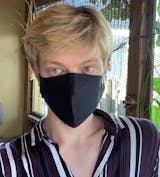We’ve all been there before. You have an event coming up, so you excitedly prepare for it by purchasing a new outfit and accessories. Then on the morning of that event, you wake up only to be greeted by a massive pimple right on your forehead that no amount of makeup can cover.
Do you leave it alone? Absolutely not. But by trying to make it smaller or less noticeable, you’re likely making things worse. We’ll talk about the types of pimples that exist, what happens when you tamper with them, and how to properly treat each kind.
Types of Acne that Exist
Let’s first identify the types of acne out there. You can categorize them into three grades. These are:
ComedonalInflammatory
Nodulocystic
Comedonal acne is your most common type of acne. These are what many, if not all of us have experienced at some point in our lives. They are caused when oil, sebum, and dead skin cells clog our pores.
There are two kinds of comedones. These are:
Whiteheads, or open comedones; and,Blackheads, or closed comedones.
Whiteheads are when a layer of skin encloses a pore that is filled with oil and dead skin, causing it to have a skin-colored head. They can appear as small bumps with no inflammation, and can often go unnoticed.
Blackheads form when a clogged pore is exposed to air. The tip of the debris in the pore becomes oxidized, causing a dark-colored head. They can feel a little bumpy, but are more often than not just visible spots found in oilier areas on the face, without any inflammation.
Inflammatory acne is what occurs when bacteria naturally found in our skin blends with the debris in our pores, and creates an inflammatory response. These show up as:
Pustules; and,Papules.
Pustules are the most common kind of pimple. They usually show up as inflamed, swollen, red, and often have a white head. These are usually the types of pimples that appear overnight, or the day before our wedding or prom.
Papules are like pustules, except without a noticeable white head. These can be easier to hide, and usually show up as red bumps that go away on their own after a few days.
Nodulocystic acne is a more severe kind of acne. It affects the follicles on a much deeper level, and can become extremely painful. There are two kinds of nodulocystic acne. These are:
Nodules; and,Cysts.
Nodules are usually larger, red, and inflamed lumps that are also usually quite sore to touch. They never get a head on them, and can feel as though there is pressure built-up within the follicles.
Cysts are very similar to nodules in that they don’t form a head. They can be sore to touch, and look red and inflamed, and can also feel itchy.
Who is Most Susceptible to Acne?
As mentioned before, acne is made up of oil, sebum, dead skin cells, and bacteria. But why are some people more prone to getting acne than others?
First of all, it will initially come down to your genetics. If one or both of your parents had acne, or has it as adults, then you may be prone to it as well. But there are other factors to consider.
Different skin types are going to be more prone to acne. There are four skin types, which are normal, dry, oily, and combination. People with oily skin are typically more prone to acne, because their sebaceous glands are more active. Nodulocystic acne is also usually only found with people who have very oily skin. But that doesn’t mean people with dry skin are exempt from acne.
Dry skin can suffer from clogged pores, simply because of the dry and dead skin build-up on the surface. Our skin is always producing oil and sebum, even in the smallest amounts, so any blockages on the surface can cause acne. But in a dry skin case, it will mostly show up as blackheads, whiteheads, and the occasional pustule.
Other Causes of Acne
Our skin type and genetics are the main drivers for acne. But because acne is essentially made up of dead skin cells and oil, it can also be caused by:
Skincare
Hormones
Stress
Medications
Diet
Skincare: Those of you with oily skin will know the feeling when you purchase a hydrating moisturizer for the first time. This can be the difference between waking up with hydrated, dewy skin, or waking up with a slimy face with new pustules and blackheads.
Same goes for those who don’t have a skincare regime, or who don’t cleanse their face every night. Removing the dead skin and debris will help your skin to breathe. You’ll also be removing any pollutants that can cause your skin oxidative damage, which ultimately causes premature aging.
Hormones: This is huge during our teens, and again during pregnancy, or any other hormonal imbalances we go through in life. Hormonal acne can be quite frustrating, as external treatments are not always effective on their own.
Sometimes medication is required to balance out the hormones that are causing the skin condition. But often it is a combination of both medication and skincare that gets hormonal acne under control.
Stress: Emotional stress can be a cause for many physical conditions, including acne. Stress increases our cortisol levels, which can send our sebaceous glands into overdrive. As mentioned before, overactive sebaceous glands produce more oil, which in turn can create a perfect environment for acne to thrive.
Stress can also affect the rest of our body in different ways, including weight loss or gain, weakened immune system, sleep issues, just to name a few. It’s important to manage your emotional wellbeing so your physical being can also stay healthy.
Medications: Some medications can cause skin to breakout, like using certain steroids. But this is normally called an acneiform eruption. However, medications can also affect hormones, which in turn can cause acne, as mentioned before.
If you’ve just started on new medication, and have suddenly started getting acne, it might be worthwhile to ask your dermatologist about it. There might be another alternative.
Diet: While our diet doesn’t necessarily cause acne for some people, it can be a contributing factor if a person has a relatively unhealthy diet. Refined sugar is a large culprit, as are foods high in saturated fats, like deep fried foods (I’m looking at you, fries!).
Sticking to fresh fruit and vegetables as much as possible, avoiding processed foods, and swapping sodas for water will have a large impact on your overall health. Even if it doesn’t help your skin completely, any nourishment we can give our bodies will also nourish our skin.
Best Treatment For Acne For Your Skin Type
If you haven’t determined your skin type yet, read this article, and then come back to us. Now that you’ve got that figured out, it’s time to treat your acne.
First thing’s first: DO NOT PICK YOUR PIMPLES.
I know it is incredibly tempting, when the white volcano is quite literally in your face, ready to erupt. Just a little pinch, a little squish, a little squeeze… Step away from the mirror. Here are three reasons why you shouldn’t pick those pesky pimples:
Touching them with your fingers means you’re allowing even more bacteria into the area, not to mention if you pick at it and break the skin, the bacteria can get right into your follicle, which can prolong the pimple’s life—eek!
If you do manage to pop a pimple, you’re not only exposing your skin to more bacteria, but you’re rupturing that epidermis layer in an uneven way, which can and will cause scarring.
Pushing around the area of the pimple in a bid to get the sucker out will trigger your skin’s defenses. Red blood cells will come rushing to the surface, and you’ll end up with an even bigger, and redder lump than before.
Now that we’ve discussed the no-no’s of popping a pimple, let’s now go over a regimen that works effectively for acne. Whether you have dry, oil, normal, or combination skin, these products are gentle enough, and broad enough for all skin types.
Cleanser: M.S.Skincare’s Mantra Skin Perfecting Cleanser
Why it works: it contains holy basil, a known anti-inflammatory ingredient that also reduces acne and pigmentation. It has neem, another anti-inflammatory herb that promotes wound healing, and relieves dryness and itchiness. It also has turmeric, with inflammation-reducing and skin-brightening properties.
Use: Morning and night.
Exfoliant: Stevie Fox’s La La Lit Power Glow Mask
Why it works: this chemical exfoliant uses the power of fruit enzymes—banana puree, grape skin, apple extract, orange peel, papaya— with acne-fighting salicylic acid to resurface and brighten the complexion.
Use: 2-4 times a week, depending on sensitivity.
Mask: Earthwise Beauty’s Catharsis Face Mask
Why it works: it contains antioxidant-rich aloe, which is brilliant for healing and brightening scarred and blemished skin. It also contains neem, which as mentioned before is an anti-inflammatory herb. Spirulina and chlorella algae both cleanse pores deeply, while offering the skin protecting phytonutrients, like beta-carotene and amino acids. While green algae strengthens the skin matrix.
Use: After exfoliating.
Serum: Earth Harbor’s Nebula Adaptogen Clarity Ampoule
Why it works: containing sea lavender (or marsh rosemary) which works by balancing the skin's oil production, and clarifying oily skin and hair. It also contains ginseng, a natural antioxidant that helps minimize inflammation.
Use: after cleansing and treatments, morning and night.
Moisturizer: Earthwise Beauty’s Ambrosia de Cerrado Lightweight Moisturizer
Why it works: this lightweight, yet nourishing moisturizer contains three brilliant ingredients sourced from South America. Pequi fruit oil, high in vitamin A and beta-carotene, which helps with skin texture and pigmentation; buriti oil, high in antioxidants, and also effective in reducing pigmentation and dark spots; and moringa pod oil, high in phytonutrients to protect the skin. The formulation works effectively for dry and oily skin.
Use: Morning and night as the final step in your regime.
Next time a pimple rears its ugly head, try to refrain from picking it. Follow this regime to give your skin the ammunition it needs to heal and thrive.
Emma Masotti is an Australian now living in Austin, TX, and has been a trained esthetician for over 15 years. She is a sustainable skincare writer, educating and building awareness around proper skin health that doesn’t cost the earth.
Some of the products promoted in our blog are from our online store. Many others are brands we have researched and found to be great examples of sustainable, ethical, and innovative brands in their field, and we don't make any profit from mentioning them in our blog. #CollaborationOverCompetition










